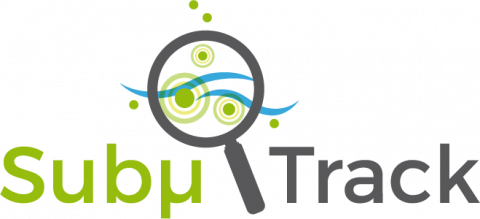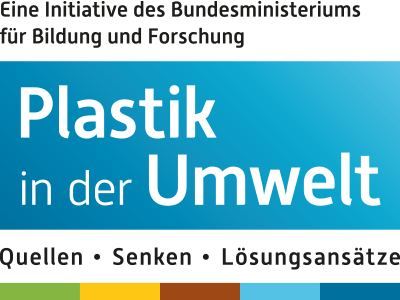SubμTrack
SubμTrack

Prof. Dr.-Ing. Jörg E. Drewes
Technical University of Munich,
Chair of Urban Water Systems Engineering / TUM-SWW
Am Coulombwall 3
85748 Garching
Phone: +49 89 2891 3701 bzw. -3718
e-mail: jdrewes@tum.de
The methods currently available for the analysis of microplastics in environmental matrices were primarily designed for particles in the size range of 1 μm to 5 mm. Smaller particles below 1 μm were hardly detected. However in contrast to larger particles, these are able to enter cells and have a higher potential for adsorption of pollutants due to their relatively larger surface. SubμTrack focuses on plastic particles between 50 nm and 100 μm, because of their higher ecotoxicological relevance. For this purpose, the previously available detection range was extended and new methods for sampling, sample preparation, and analysis were developed. Another focus of the project were the possible effects of submicroplastic particles on the aquatic environment and on human health. The results of these studies were complemented by an assessment of the social, political and legal dimensions of plastic emission into the environment. By analysing the perception of the problem and possible strategies for action, foundations were laid for active processes of social change. The results were also examined regarding to their implementation in legislation, standardisation, and their relevance for voluntary actions.
Main areas of work
- Characterisation of particles and comparison with reference materials
- Impact on the aquatic environment and human health
- Social, political and legal dimensions of plastic emission into the environment
WP 0 Organisation, coordination and public relations
Contact persons
Prof. Dr.-Ing. Jörg E. Drewes, Technical University of Munich, Chair of Urban Water Systems Engineering, Am Coulombwall 3, 85748 Garching, e-mail: j.drewes@tum.de
Project partner
TUM-IWC, TUM-LTI, TUM-LAS, TUM-MCTS, IGOE, LfU, UBA, IUTA, Postnova Analytics GmbH, BS-Partikel GmbH
Short description
In addition to the coordination of results and products within the consortium, WP 0 also included the coordination of activities with partners outside the project. The goal was the sustainable implementation of the analytical techniques, the results and the instructions for action of harmonised strategies in close cooperation with national and international key institutions. The public relations work was mainly coordinated by TUM-SWW and effectively implemented by partners of different orientations.
WP 1 Selection and production of reference particles
Contact persons
Dr. Carmen Nickel, Dr. Jochen Türk, Institute of Energy and Environmental Technology e. V. (IUTA), Bliersheimer Str. 58- 60, 47229 Duisburg, e-mail: nickel@iuta.de; tuerk@iuta.de
Project partner
LfU, BS-Partikel GmbH
Short description
Together with the partners of BS-Partikel and the leaders of the experimental WPs 2 – 5 the required reference particles were identified. In particular, the size, material, marking and the availability of the particles played an important role. The reference particles were selected during the initial phase of the project in order to have enough time to fabricate or purchase the particles at the beginning of the experiments. The project partners BS-Partikel and IUTA then provided the corresponding particles.
WP 2 Comprehensive analysis of microplastic particles
Contact persons
Prof. Dr. Martin Elsner, Dr. Natalia P. Ivleva, Technical University of Munich, Chair of Analytical Chemistry and Water Chemistry, Institute of Hydrochemistry, Marchionistrasse 17, 81377 Munich, e-mail: natalia.ivleva@ch.tum.de
Project partner
Postnova Analytics GmbH, BS-Partikel GmbH, TUMSWW, TUM-LTI, LfU, IUTA
Short description
Innovative and proven analytical detection methods (including sampling, preparation, identification and quantification) for microplastics (1 μm – 5 mm) were determined and tested with reference materials in the submicron range. The most successful techniques of the MiWa project running since 2016 serve as a starting point for this; standard methods from this project were integrated and compared. Direct contact to actors of the MiWa project was guaranteed by partners of the consortium (TUM-IWC and UBA).
WP 3 Studies on aging, adsorption and desorption of organic trace substances on reference particles
Contact persons
Prof. Dr.-Ing. Jörg E. Drewes, Technische Universität München, Lehrstuhl für Siedlungswasserwirtschaft, Am Coulombwall 3, 85748 Garching, e-mail: j.drewes@tum.de
Project partner
LfU
Short description
The particles used in the method validation are subjected to systematic aging processes and biofilm growth. Furthermore, these particles and especially their (resulting) different surfaces were examined regarding their adsorption or desorption characteristics of organic molecules. For this analysis, adsorption and desorption kinetics, among other things, were investigated. This was done by applying TD-(Pyrolysis)-GC-MS and LC-MS/MS. Experiments with the aged particles were carried out in so-called batch approaches, but also in laboratory wastewater treatment plants operated at the LfU. All samples were also stored in the biological systems of WP 5 if required.
WP 4 Investigations on entry points and process-related evaluation
Contact person
Dr. Korbinian Freier, Bavarian State Office for the Environment, Demollstraße 31, 82407 Wielenbach, e-mail:korbinian.freier@lfu.bayern.de
Project partner
TUM-SWW, IUTA
Short description
Using the methods developed and validated in WP 2, real scenarios were first simulated with reference particles in laboratory wastewater treatment plants at the partner LfU to analyse the fate of the particles within the system. Parallel to this, investigations were carried out at various measuring points in real wastewater treatment plants. Water samples were certified by IUTA for micropollutants. The aim was to extend the existing sampling technologies to micropollutants. Finally, together with the other partners of the project and based on the expected results, a process-related evaluation was carried out.
WP 5 Impact on aquatic environment and human health
Contact person
Prof. Dr. Michael Pfaffl, Technical University of Munich, TUM School of Life Sciences Weihenstephan, Technical University of Munich, Chair of Animal Physiology and Immunology, Weihenstephaner Berg 3, 85354 Freising, e-mail: michael.pfaffl@wzw.tum.de
Project partner
TAM-LAS, IGOE
Short description
Potential negative effects of submicroparticles on different biological organisational levels were investigated and compared to obtain a comprehensive ecotoxicological evaluation. This includes the use of model systems in vivo to determine effects on microbial diversity, communities and trophic structures and functions as well as to identify stress reactions on a higher organismic level. In vitro models extended this approach for the determination of effects on the cellular and molecular level. Based on this a mechanistic understanding of particle-induced stress reactions was created and potential effects on human health were derived.
WP 6 Social, political and legal dimensions
Contact person
Prof. Dr. Ruth Müller, Technical University of Munich, Assistant Professorship of Science and Technology Policy, Augustenstraße 46, 80333 Munich, e-mail: ruth.mueller@tum.de
Project partner
UBA
Short description
At TUM-MCTS current problem perceptions and coping strategies in society and politics with regard to plastic particles in the environment were analysed by means of qualitative social scientific methods. The focus lay on the perception of the specific ecotoxicological relevance of submicroparticles. UBA carried out a screening of the relevant legal acts at national, European and intercontinental levels. The consideration goes beyond the pure media reference (water, soil and air) and the associated possible transport paths. In particular, the legally undefined range between nano- (limit: 100 nm) and microplastics (frequently stated limit: 1 μm) is of primary interest.
